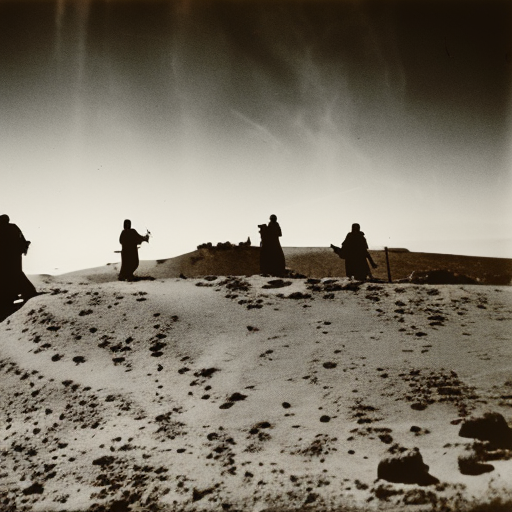Battle of Kasserine Pass: A Costly Lesson for the Allies
The Battle of Kasserine Pass was a significant engagement that took place during World War II in North Africa. It occurred from February 19 to 25, 1943, and was fought between the Allied forces, primarily composed of American troops, and the Axis forces led by German Field Marshal Erwin Rommel.
The Setting
Kasserine Pass is a narrow gap located in the Atlas Mountains of western Tunisia. It served as a vital route for the Allies to advance towards the Tunisian capital and cut off Rommel’s supply lines. The pass was defended by the German Afrika Korps, which had proven to be a formidable opponent in previous battles.
The Allied Plan
The Allied plan was to launch a two-pronged attack on the Axis forces. The British Eighth Army, under the command of General Bernard Montgomery, would attack from the east, while the U.S. II Corps, led by General Lloyd Fredendall, would attack from the west. The goal was to trap and defeat Rommel’s forces.
The Initial Axis Success
The battle began with a series of tactical errors by the American forces. The U.S. troops were inexperienced and poorly trained, and their commanders lacked coordination and effective communication. Rommel, on the other hand, was a seasoned commander who quickly exploited these weaknesses.
The Axis forces launched a surprise attack on the American positions, catching them off guard. The U.S. troops were overwhelmed by the superior German tactics and firepower. The American tanks, in particular, were no match for the German Panzers. The initial days of the battle saw the Americans retreating in disarray, suffering heavy casualties and losing valuable equipment.
The Turning Point
Despite the initial setbacks, the Battle of Kasserine Pass eventually turned in favor of the Allies. General George S. Patton, a highly skilled and aggressive commander, was brought in to replace Fredendall. Patton quickly reorganized the American forces, instilled discipline, and boosted morale.
Under Patton’s leadership, the Allies launched a counterattack on the Axis forces. The American artillery and air support played a crucial role in turning the tide of the battle. The Axis forces, already stretched thin, were unable to withstand the renewed Allied assault.
The Aftermath
The Battle of Kasserine Pass was a costly lesson for the Allies. It exposed the weaknesses in the American military’s training and leadership. However, it also served as a wake-up call, prompting the Allies to reassess their strategy and make necessary improvements.
The battle highlighted the importance of effective coordination and communication among the Allied forces. It also emphasized the need for better training and equipment for the American troops. The lessons learned at Kasserine Pass would prove invaluable in the subsequent North African campaigns and the eventual defeat of the Axis powers.
Conclusion
The Battle of Kasserine Pass was a significant setback for the Allies, but it ultimately served as a turning point in their campaign against the Axis forces in North Africa. The battle highlighted the importance of leadership, coordination, and training in military operations. It also demonstrated the resilience and adaptability of the Allied forces, who were able to learn from their mistakes and emerge stronger. The lessons learned at Kasserine Pass would shape future military strategies and contribute to the ultimate victory of the Allies in World War II.












